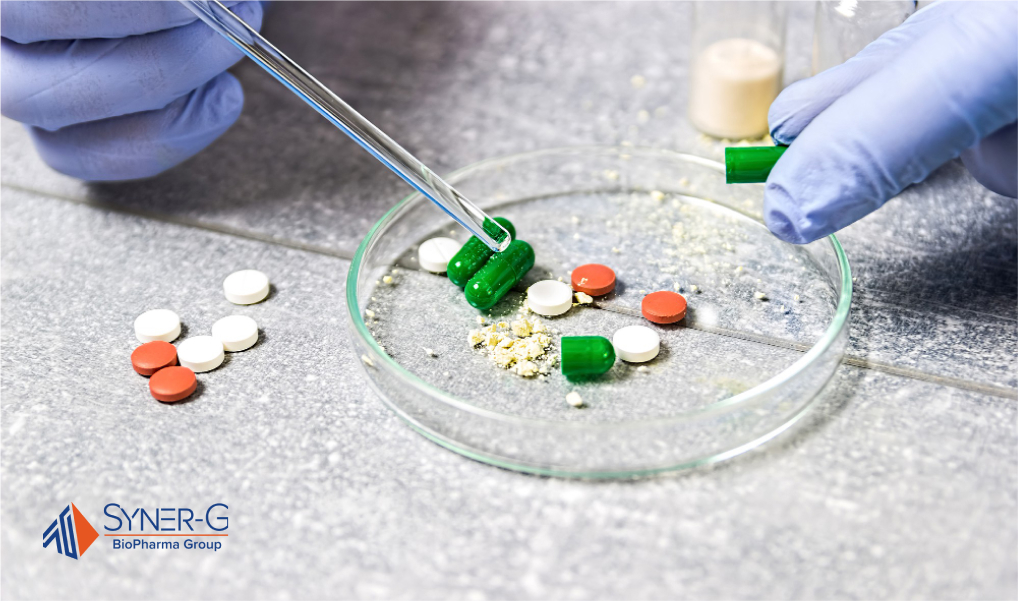In the high-stakes world of drug development, bringing a new drug to market represents the culmination of years—often decades—of scientific innovation, clinical research, and regulatory strategy. At the center of this journey stands the U.S. Food and Drug Administration (FDA), whose rigorous drug approval process serves as both gatekeeper and guide for pharmaceutical companies seeking to introduce new prescription drugs and over-the-counter drugs to patients in need. Understanding the FDA approval process for medications is not merely advantageous for any pharmaceutical company—it’s essential for survival in a competitive landscape where regulatory expertise can determine whether a new therapy succeeds or fails.
This article outlines the FDA approval process, breaking down the core phases, regulatory checkpoints, and strategic considerations that drug manufacturers and generic drug companies must navigate to gain FDA approval.

The Drug Development Continuum
Preclinical Research and Development
The FDA approval process begins well before human clinical trials. In the preclinical research phase, drug companies conduct laboratory and animal testing to evaluate a compound’s pharmacological properties and toxicological profiles. This phase helps establish safety parameters and identify potential risks that might impact human subjects.
Preclinical research typically involves target identification, lead optimization, and a series of animal studies designed to assess effects on vital organ systems. Animal testing also includes toxicology assessments across various exposure levels. It’s estimated that between 5,000 and 10,000 compounds are screened during this stage for every one drug that will ultimately become FDA approved—a striking reminder of how selective the process truly is.
The Investigational New Drug Application
To move from preclinical studies to human data collection, a pharmaceutical company must submit an Investigational New Drug (IND) application. This drug application includes submitted data from laboratory and animal testing, drug data supporting product quality, proposed clinical trial protocols, and qualifications of investigators.
The Food and Drug Administration has 30 days to review the IND. If no clinical hold is placed due to safety concerns, human clinical trials can begin. This critical milestone represents official entry into the FDA approval process.
Clinical Trials and the Four-Phase Paradigm
Human trials are the backbone of the FDA review process. These clinical trials typically unfold in four phases:
Phase 1
Evaluates the safety of a new drug in 20–100 healthy volunteers. These trials focus on how the drug is absorbed, metabolized, and excreted, helping to answer basic questions about dosage, toxicity, and pharmacokinetics.
Phase 2
Tests the drug in several hundred patients with the target condition to assess efficacy and further explore short-term side effects. Drug manufacturers refine dosing regimens based on human data from these studies.
Phase 3
Involves multiple trials across 1,000–3,000 participants to confirm efficacy, monitor adverse reactions, and compare the drug to current treatment standards or placebos. These pivotal studies provide the scientific data needed for a New Drug Application (NDA).
On average, clinical development takes 6.5 years, and the cost to gain FDA approval—including costs of failed candidates—can exceed $2.6 billion per approved drug. These figures reflect the scope of investment required by any name-brand drug or generic drug company to navigate the drug approval process.
Phase 4
Conducted after a drug has been FDA approved and is on the market, Phase 4 trials (also called post-marketing studies) gather additional information on long-term safety, effectiveness, and potential interactions. These studies may be required by the FDA—especially for drugs approved under an accelerated approval pathway—or conducted voluntarily by the drug sponsor. They are essential for identifying rare or delayed adverse effects, evaluating the drug’s performance in broader populations, and assessing comparative effectiveness.

The New Drug Application (NDA)
Following successful clinical trials, drug manufacturers submit an NDA, the comprehensive request for FDA approval to market a prescription medication or over-the-counter drug. The NDA includes detailed submitted data from every clinical trial, manufacturing protocols, intended use, labeling proposals, and safety updates.
Some new drug applications exceed 100,000 pages of documentation. The FDA conducts an initial 60-day review to determine whether the NDA is complete and ready for full assessment.
The FDA Review Process
Once accepted for standard review or priority review designation, the NDA is evaluated by multidisciplinary FDA teams—including medical reviewers, pharmacologists, statisticians, and chemists. For some applications, advisory committees may also be convened to evaluate known risks and health benefits in high-risk populations.
Standard review takes 10 months, while priority review aims for a 6-month timeline, typically applied to prescription drugs addressing serious conditions or unmet medical need. Historically, around 40–50% of New Molecular Entity (NME) NDAs are approved based on the first submission, with the rest requiring more data or clarification.
Advisory Committee Meetings
For novel drugs, class III devices, or high-risk devices, the FDA may hold public advisory committee meetings. These panels—composed of independent experts—offer critical assessments of submitted data and can influence final approval decisions, though their guidance is non-binding.
Expedited Pathways for Critical Therapies
The FDA aims to expedite access to medications that address unmet medical needs or demonstrate substantial improvement over existing therapies. Several programs support this goal:
- Fast Track facilitates early and frequent engagement between the FDA and drug companies, with rolling review of NDA sections.
- Breakthrough Therapy designation provides intensive FDA guidance for products that demonstrate substantial improvement in early clinical trials.
- Accelerated Approval allows drugs to be approved based on surrogate endpoints, ideal for treatments of serious conditions that would otherwise require long-term outcomes to demonstrate efficacy.
- Priority Review shortens the FDA review timeline from 10 to 6 months when a drug offers significant improvement over available therapies.
These accelerated approval pathways have increased the speed at which new drug therapies, particularly those with high health benefits, reach patients.

Over-the-Counter Drug Regulation and Generic Drug Pathways
Not all medications follow the same approval path. Over-the-counter drugs may fall under OTC monograph regulations rather than the NDA pathway. These monographs define acceptable ingredients, intended use, dosage forms, and labeling for nonprescription drug products. The FDA is actively modernizing OTC drug monographs through the CARES Act, aiming to streamline approval and collect fees for review.
Meanwhile, when a patent expires on a name-brand drug, a generic drug company may file an Abbreviated New Drug Application (ANDA) to market a bioequivalent version. Unlike NDAs, ANDAs do not require new clinical trials but must show that the generic drug is therapeutically equivalent to the original.
Beyond Approval to Patient Access
The FDA’s role in the drug approval process is to strike a balance between protecting public health and enabling access to innovative prescription medications and over-the-counter therapies. For a pharmaceutical company to succeed in gaining approval, it must align its regulatory strategy with the agency’s evolving expectations, submit robust scientific data, and remain vigilant in post-market compliance.
As the complexity of medical devices, biologics, and prescription drugs grows, FDA approval remains a dynamic and demanding process. Drug manufacturers who view the FDA not as a bureaucratic hurdle but as a strategic partner stand the best chance of bringing their products to market quickly and safely.
By understanding the nuances of the FDA approval process for medications—and designing development programs that anticipate FDA review standards—drug companies can transform promising science into tangible treatments that improve and save lives across the globe.

